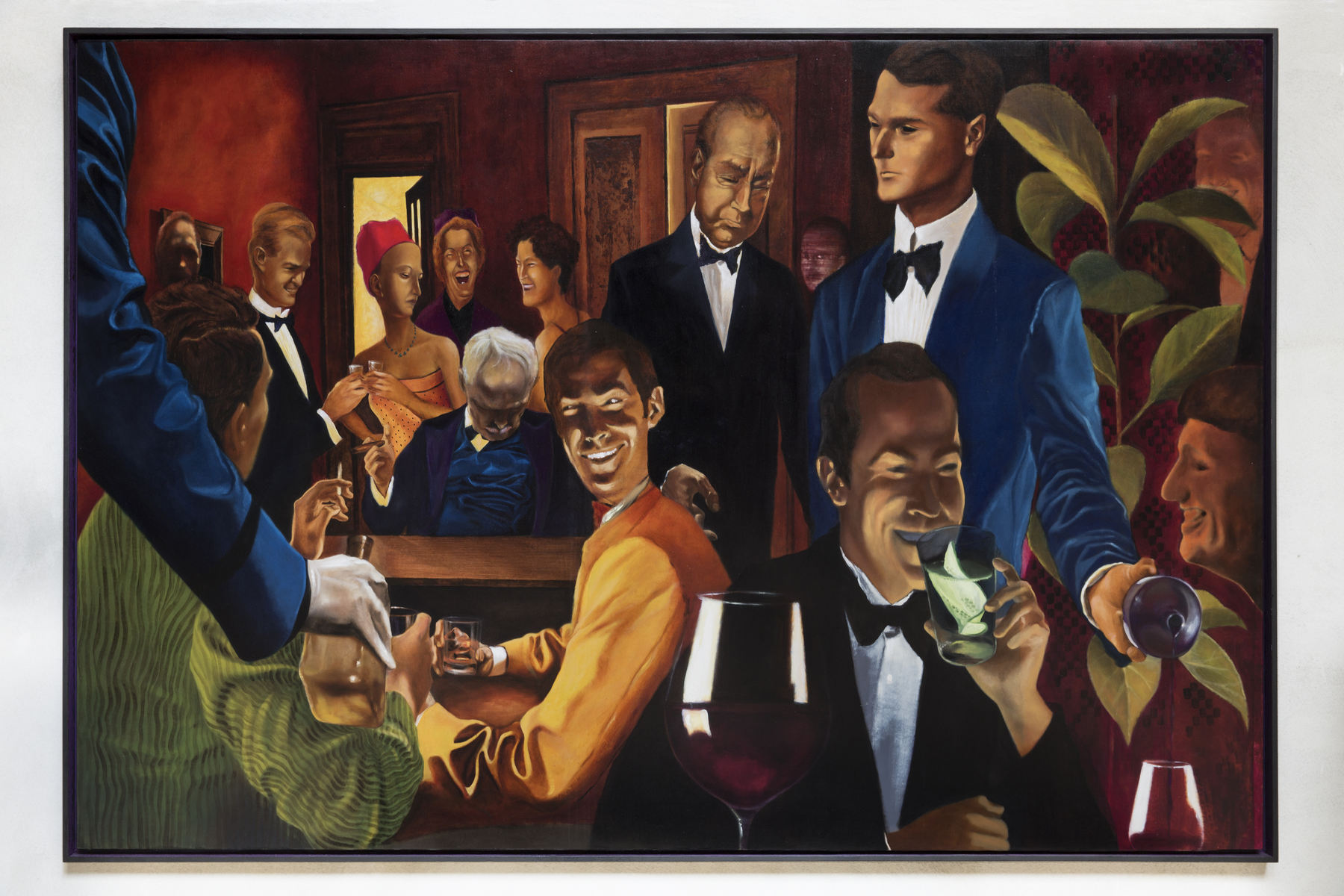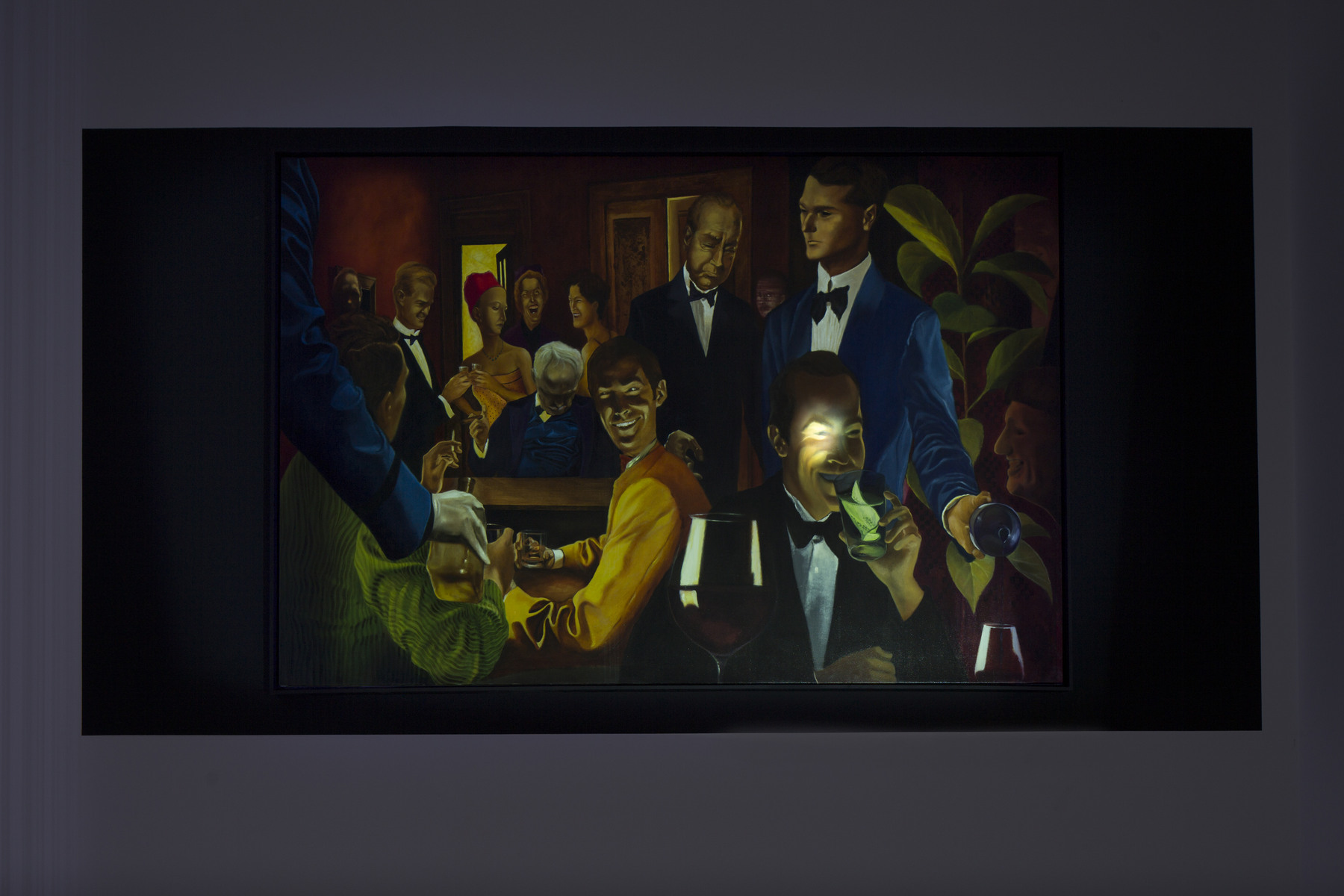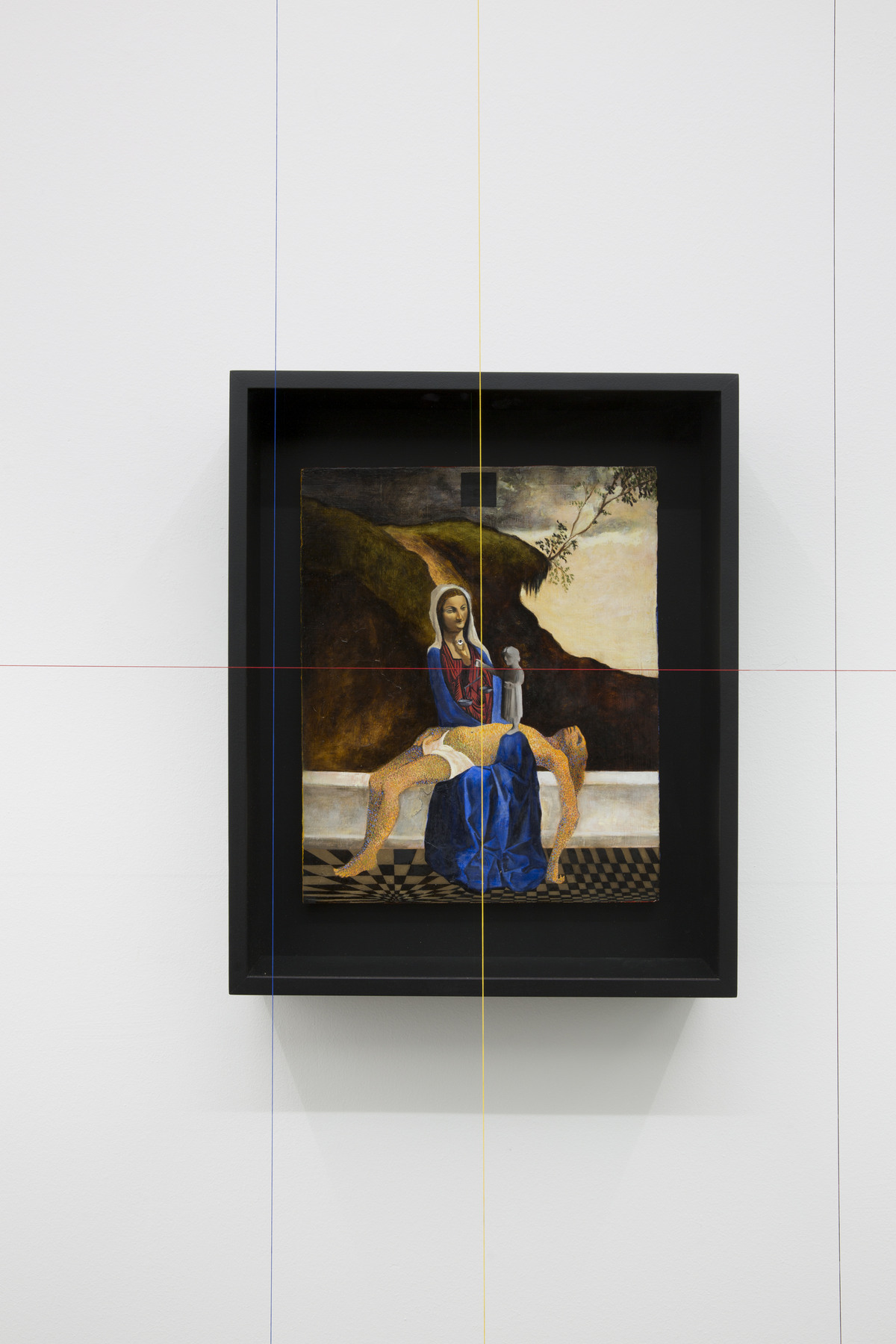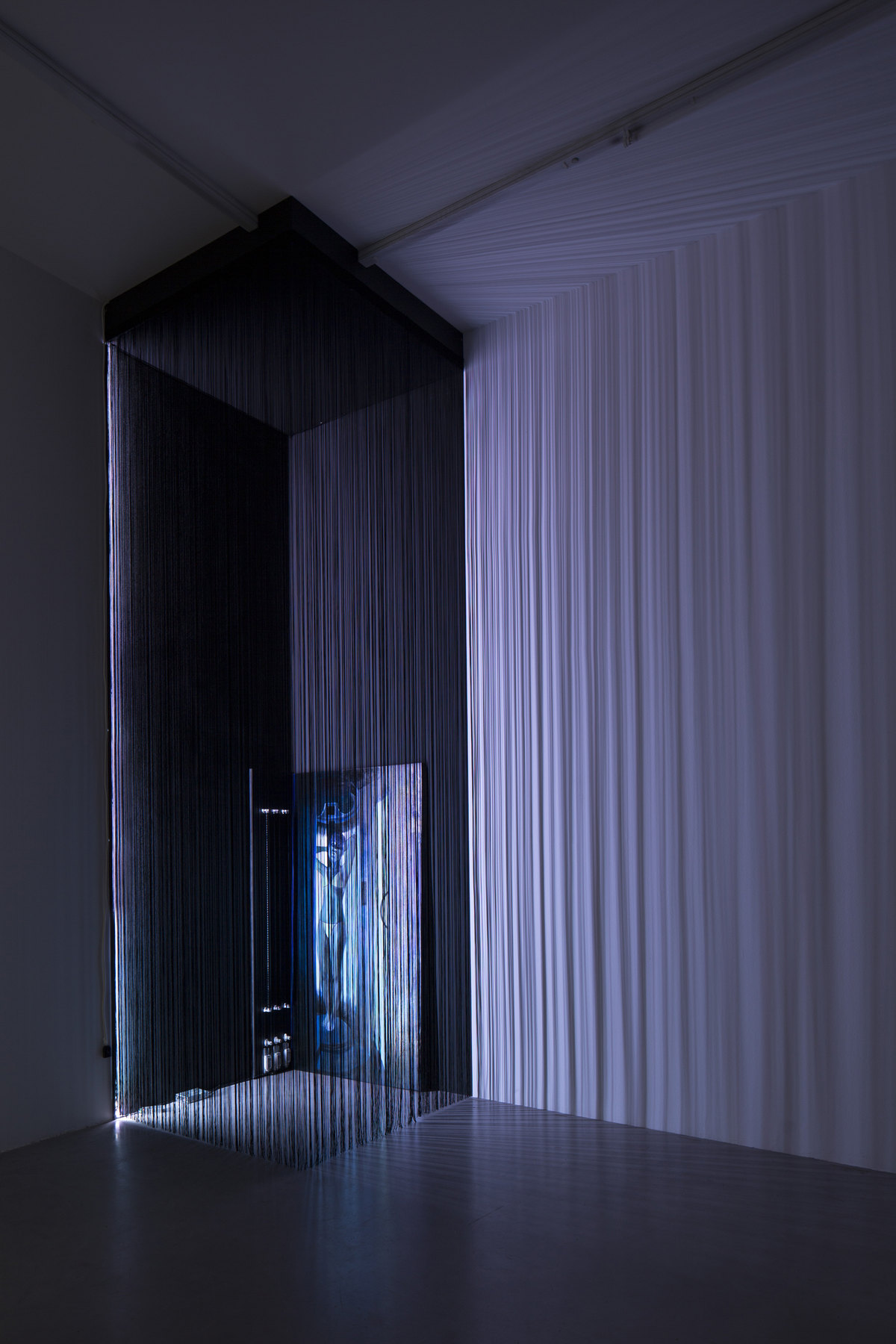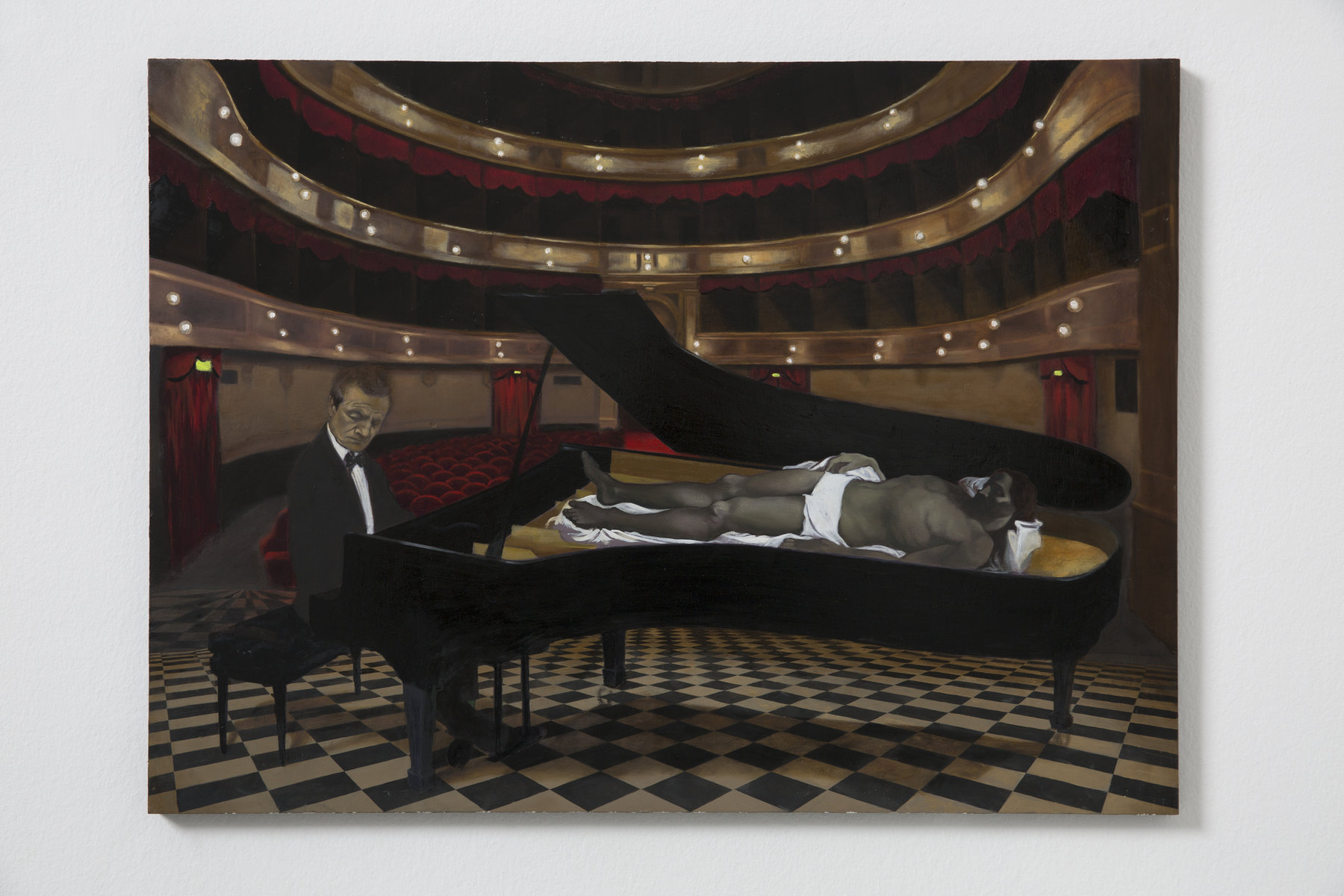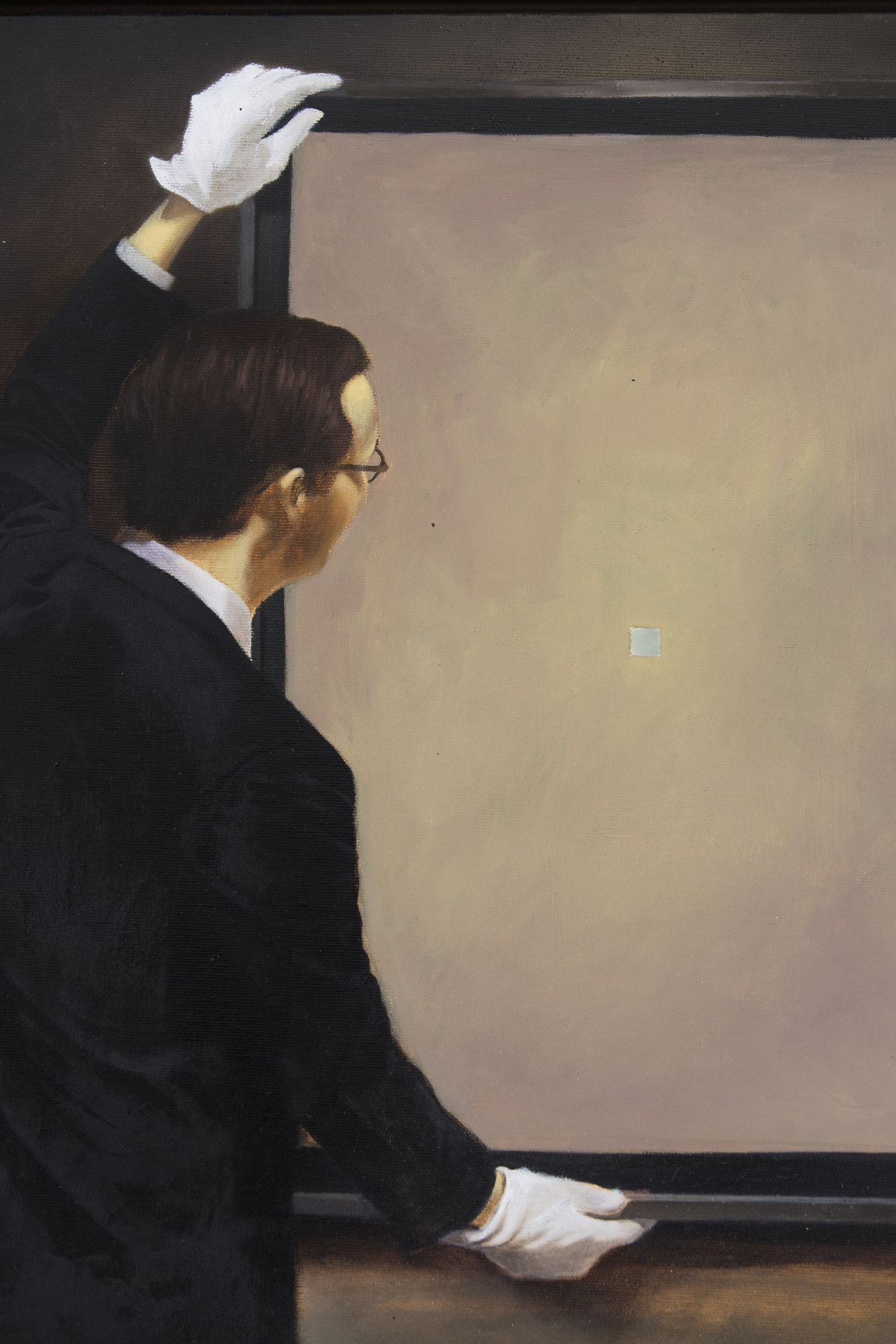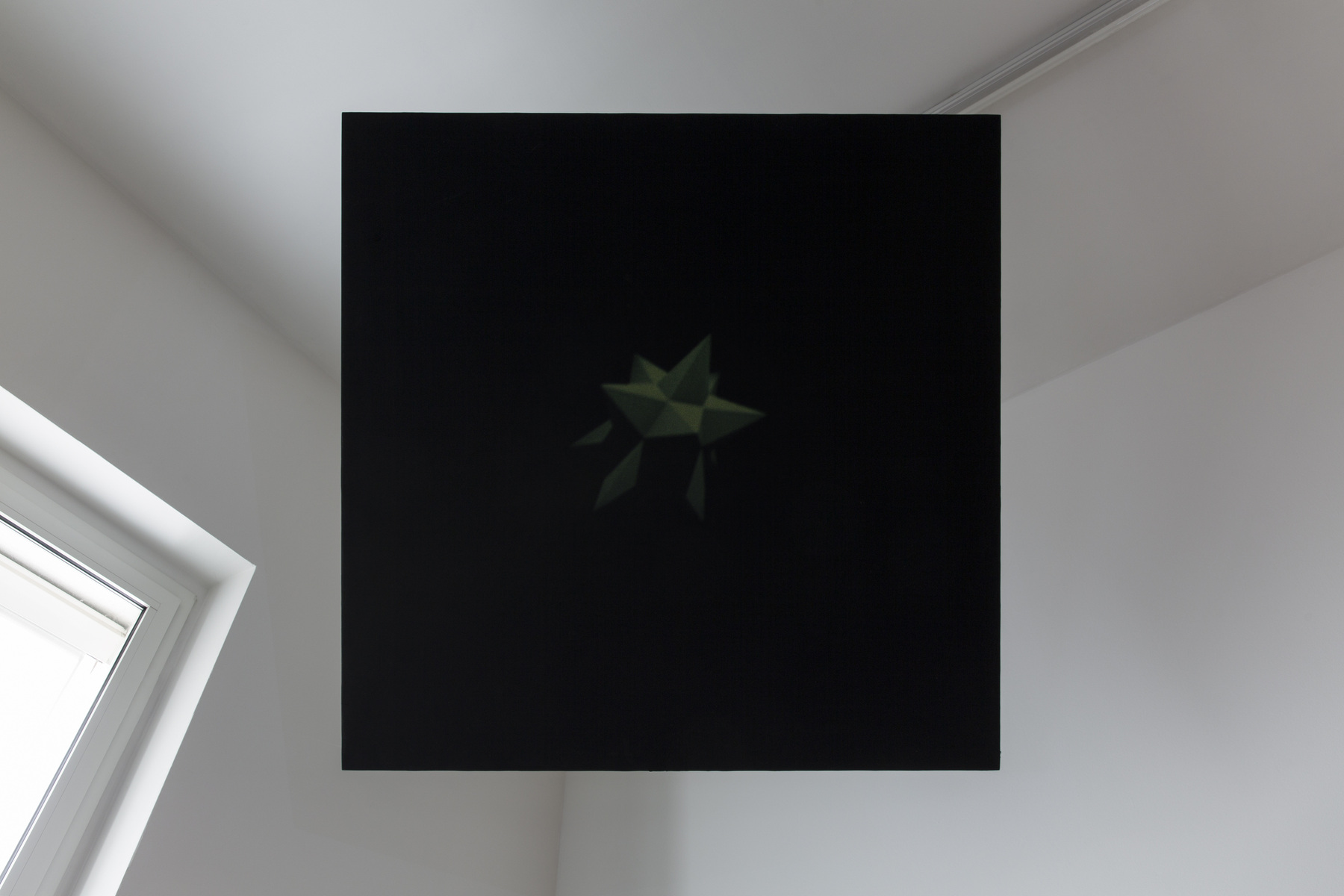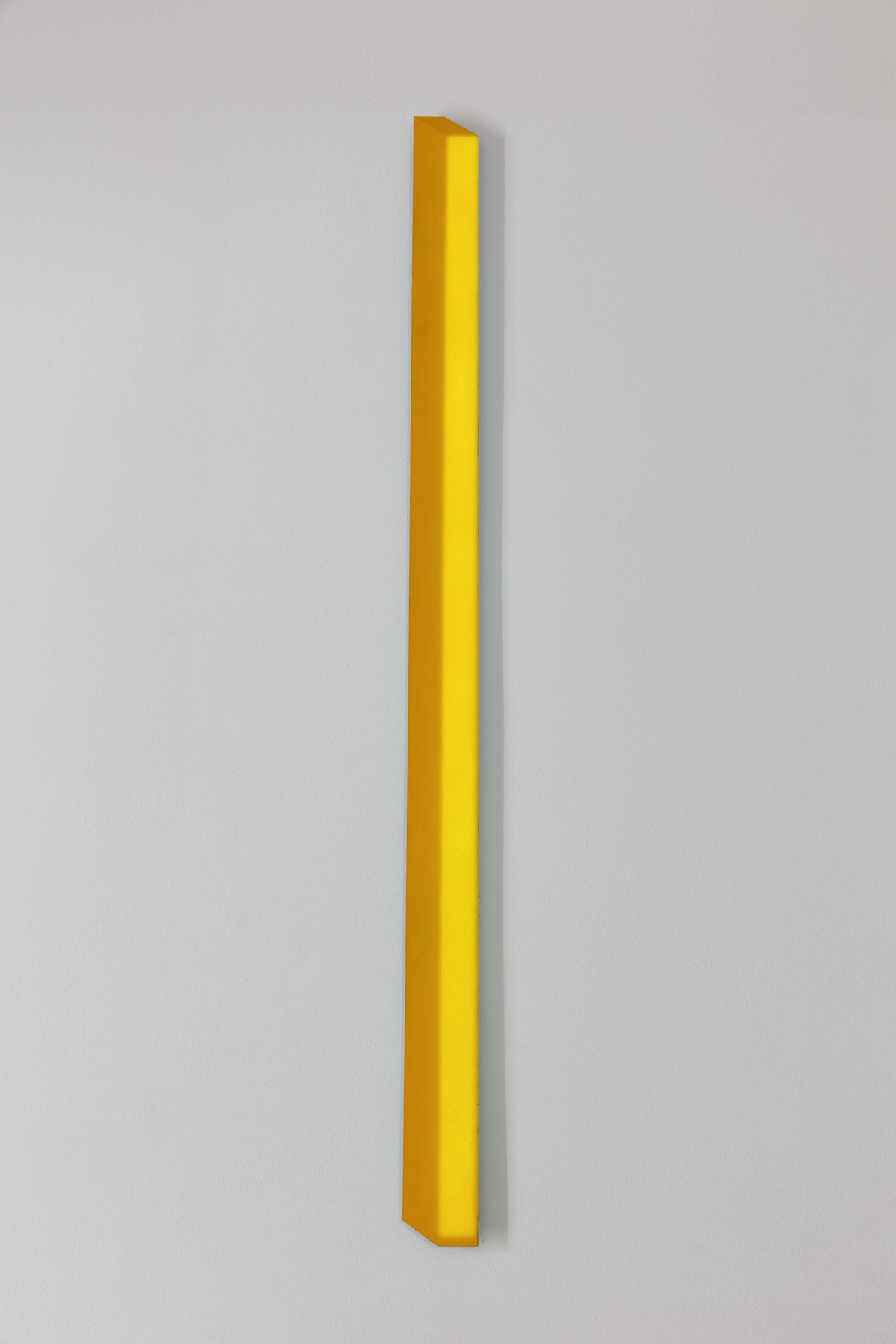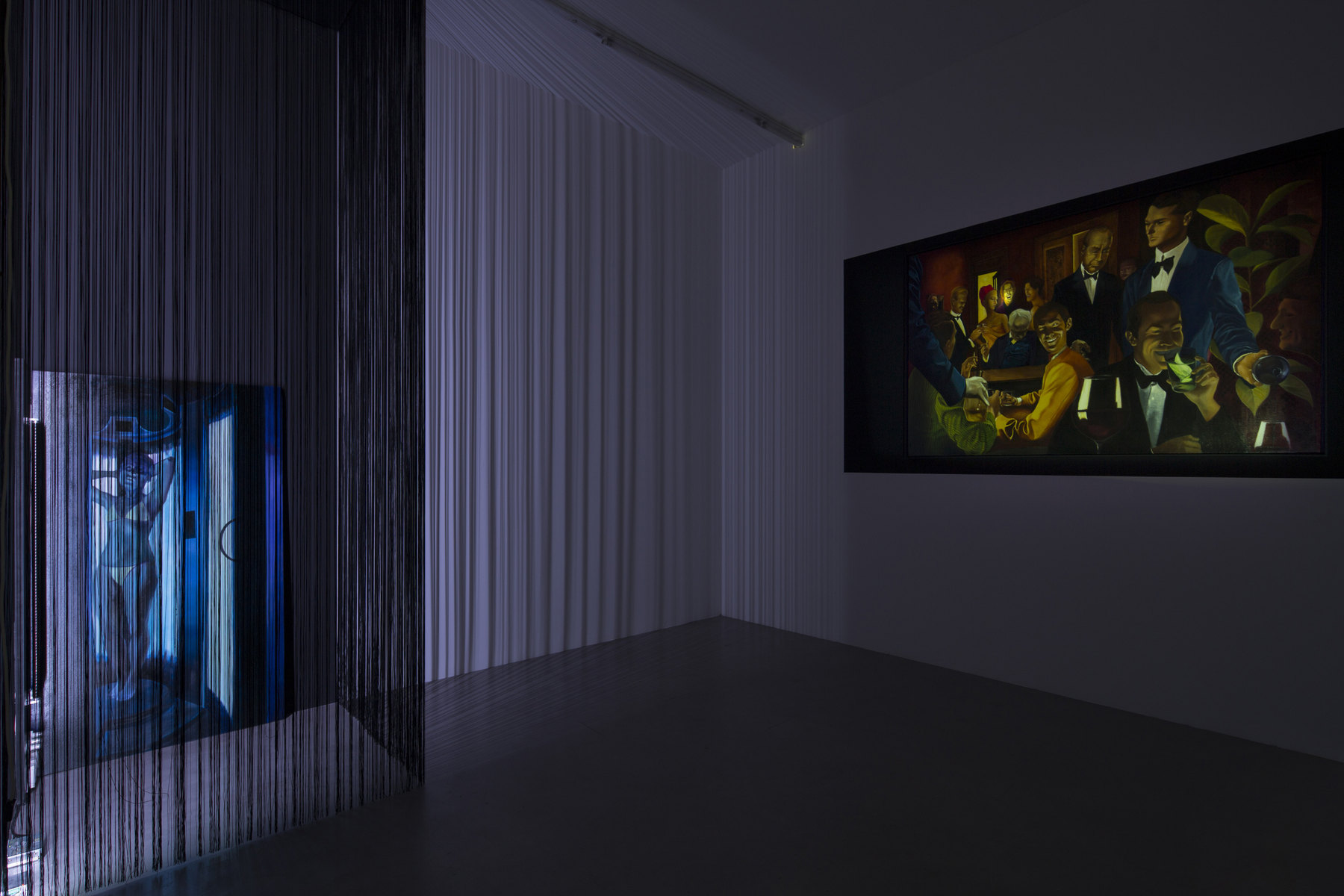Artist: Giulio Frigo
Exhibition title: 360 780 nm
Venue: Francesca Minini, Milan, Italy
Date: September 17 – November 14, 2015
Photography: images copyright and courtesy of the artist and Francesca Minini, Milan
They always emerge on the threshold of a surface. Images are superficial, surfaces. What surface am I talking about? The fluid, ineffable, fleeting and wonderful surface of color. Scientists say that it is just between two figures, impassable and importable like the Pillars of Hercules of the visible. Where are thought images located? And what of those of dreams or memories? I fear my discourse is starting to become obscure: I am meditating on painting and color, which, if one thinks about it, is only another way to talk about light and presence.
At the end of the 1960s Robert Irwin spent six hours in an anechioc chamber, completely isolated from exterior influences, and afterwards remarked that the world appeared the same and yet completely different. Color seemed to emanate from things, investing them like a flow of energy. As if to say: the image occurs; color is an event. Painting is performance.
This exhibition explores painting as performance. Figurative paintings, attentive to technique, materials and other traditional problems, are activated by an abstract, modulated light. Or, to consider it more simply: a light able to stimulate additional levels of sensation. The images are neither simply on a wall nor merely in our heads. They do not exist for themselves, they occur. Whether we are speaking of a form in movement or a painting, this transmission always happens in time, through perception. If the images painting delivers to us are not static but dynamic events, colored of course, then in order to get a complete understanding of the matter we have to explore the way in which this transmission takes place, to extend the pictorial gesture to this space, to examine this place between the eye and the sun, between subject and object, physical and mental. This middle land is contained in a parenthesis of luminous frequencies, in the arc of a parenthesis of time, like in a liturgy. An event more than a thing, transmitted by and in light.
A philosopher in the past masterfully defined painting in its essentiality. Essentially, he said that the sensitive element within which painting moves is the surface, whereas the way in which it takes place is the particularization of colors. Its reign is appearance. This definition however takes for granted that color in painting, once applied to a surface, is stable, unchanging and unresponsive to the light conditions in which it occurs. But this is almost never the case, because when one speaks of colors one inevitably ends up speaking of light as well, understood as the source of every possible color. And here the question becomes more subtle and problematic.
Color is not an easy subject to talk about. Objective color does not exist; it is always perceived, never truly seen. Language has always given up its attempts to define it. Or rather, it has attempted in a thousand different ways, and with a thousand and more different names tried to label it, and thus has finally ended up shattering it into a thousand different pieces, imprisoning it. Colors do not exist. It is better to look at color directly. Paying attention to it means paying attention to the limits of language that are crossed over by contemplation.
Plotinus explained well that color is without parts, it is a fluid continuum that emanates, reflects, expands, changes, emerges, mixes but does not fragment. It is impossible to say where a blue ends and a violet begins. In order to capture it they have even tried subjugating it to the discipline of geometry, trying to fit into a circle, a cube or a curve. Color became colors. And as if that were not enough, color was furthermore regulated to being a secondary property of things, in turn composed of smaller elements (perhaps other colors) and so on ad infinitum. But here we lose ourselves in subtleties.
In reality color does not hide the world of object, but opens it up, it transforms it into phenomenon. As Merleau Ponty said, it is the introduction to things. But perhaps it was a painter who best expressed this awareness: Paul Cézanne, when he defined color as the place in which the universe and man meet.
But I have said enough.
Happy viewing.
Giulio Frigo


